Not only is Mount Kilimanjaro the highest mountain in Africa, but it’s also the highest free-standing mountain in the world.
If it’s not on your bucket list, it should be.
My Mt Kilimanjaro climb was a tough one. But I made it to the summit, and I’ve written this guide to help you get there too.
So, here’s everything you need to know to start planning your Mt Kilimanjaro trek, including training and how long it takes to climb Kilimanjaro.
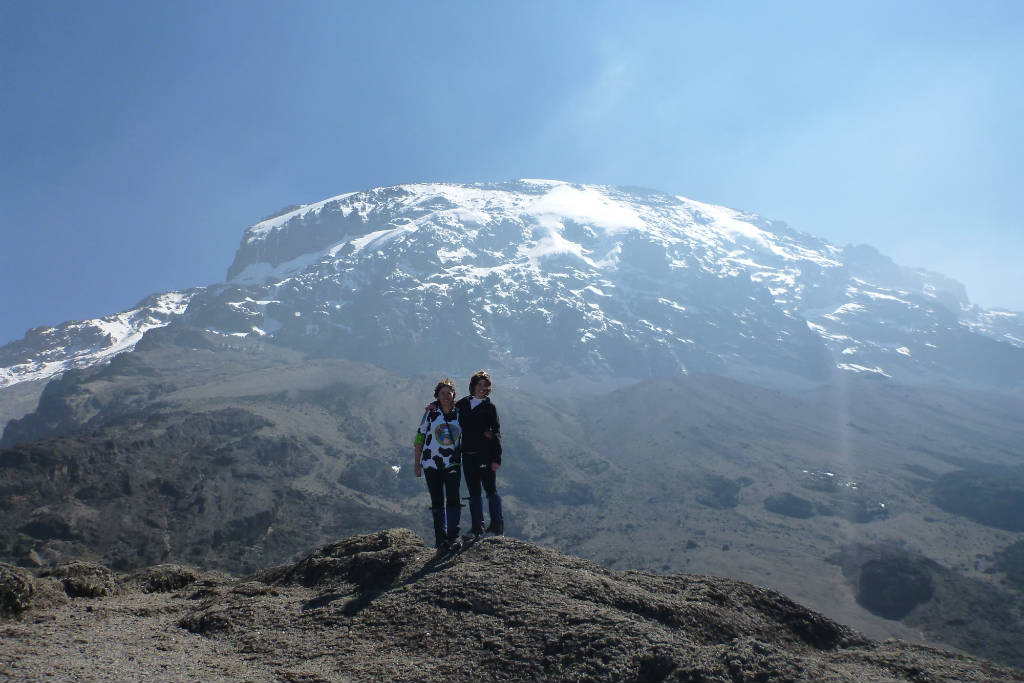
Mount Kilimanjaro Climb: Quick overview
- Days needed: 7 – 8 days
- Distance: 60 – 75 km
- Popular routes: Machame or Lemoche
- Difficulty: Challenging (due to altitude)
- Highest elevation: 5,895 m high (Uhuru Peak)
- Best time: January to March | August to October
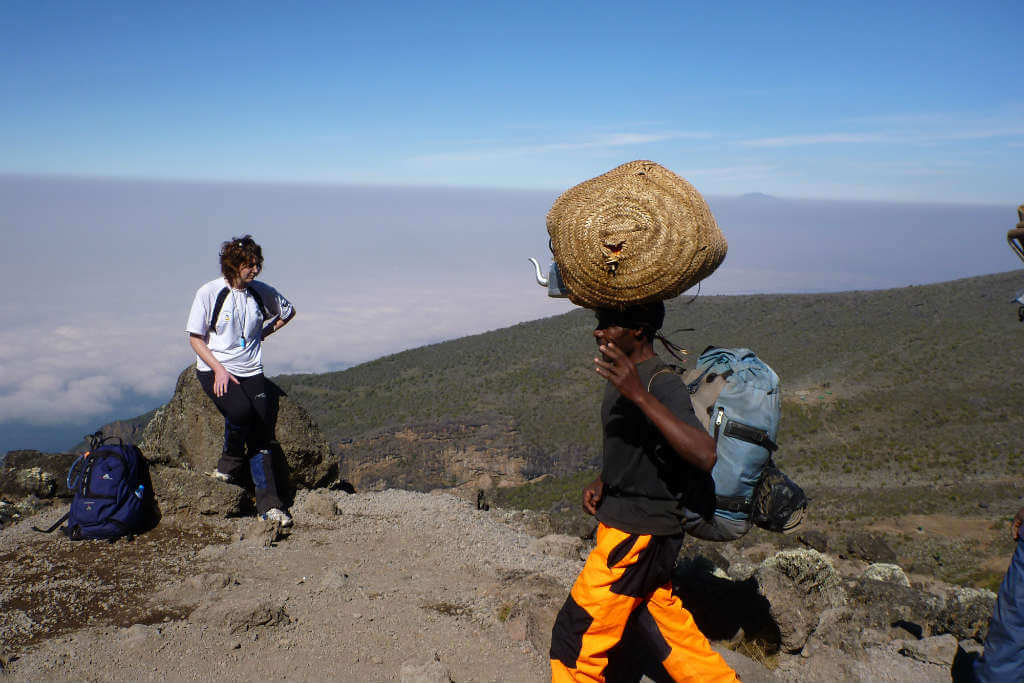
18 Things You Need To Know For Your Kilimanjaro Trek
1. Managing expectations for Mount Kilimanjaro climb
The saying “you can do anything you put your mind to” never rang so true as it did whilst climbing Mount Kilimanjaro in Tanzania.
I climbed Kili in an effort to raise funds for CHOC, an organization that provides support for children with cancer.
Having done little to no research on how hard it is to climb Kilimanjaro, I didn’t quite realize what I was getting myself into.
Looking back, summiting Mount Kilimanjaro was the hardest yet most memorable experience. It’s one of my biggest accomplishments to date.
So perhaps you’re like me. A reasonably active and driven individual.
Summiting Mount Kilimanjaro should be pretty easy, then. Right?
Um, no!
This was my mistake – underestimating the beast that Mount Kilimanjaro is.
Climbing Kilimanjaro is tough and will test you both physically and mentally.
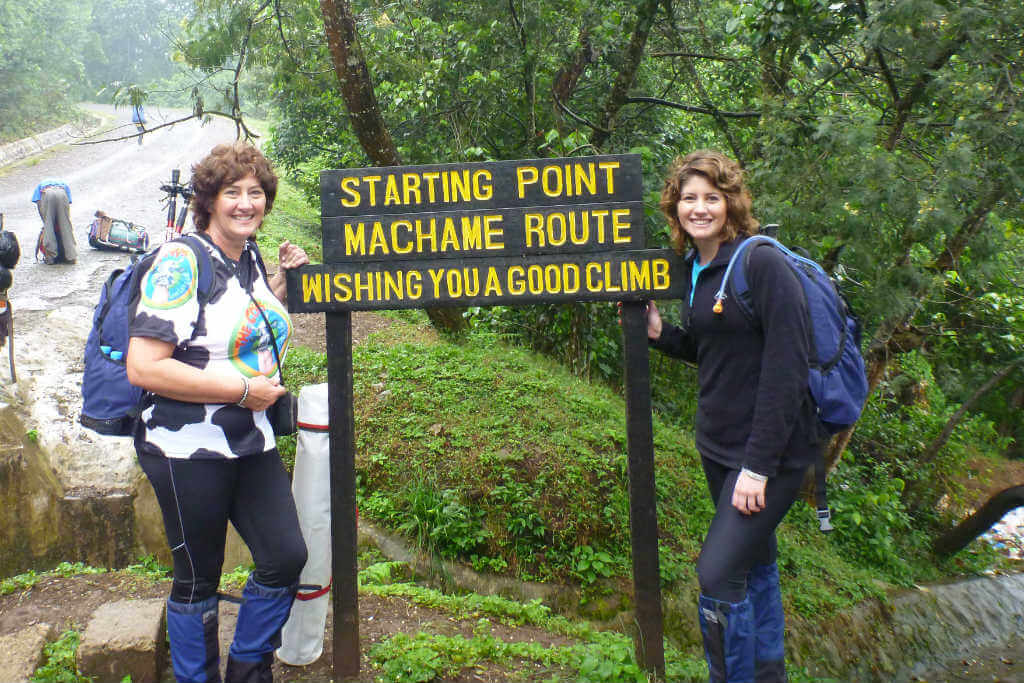
2. How long does it take to climb Kilimanjaro
There are various factors that determine how long to climb Kilimanjaro.
Depending on your climbing experience, you can choose one of several routes, which range from 6 to 9 days.
Each route has its own pros and cons with regard to pricing, duration, and accommodation.
It’s better to extend your trip and opt for a 7 or 8-day Kilimanjaro trek as this allows for your body to better adapt to the altitude.
3. There are 7 Kilimanjaro routes
| Machame Route | 7 Days | Most popular | scenic |
| Lemosho Route | 6 – 8 days | Most scenic | popular |
| Rongai Route | 6 – 7 Days | Not best for acclimatization |
| Shira Route | 7 Days | Highest starting point |
| Marangu Route | 6 Days | Hut accommodation |
| Umbwe Route | 7 Days | Hardest route |
| Northern Route | 9 Days | Newest route | uncrowded |
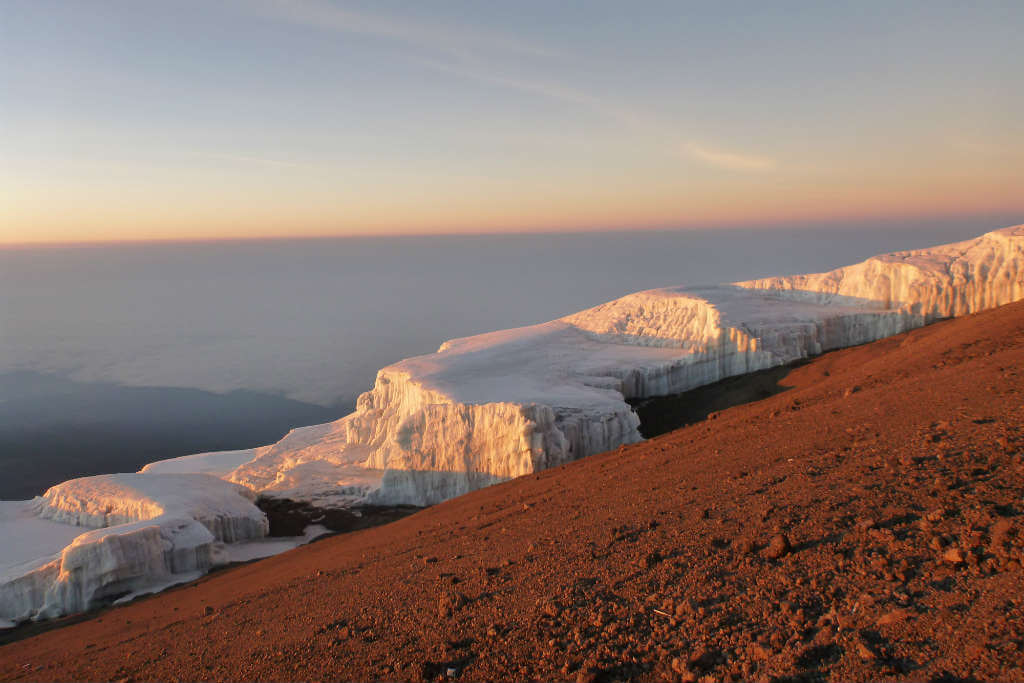
4. Machame Route is the Most Popular Kilimanjaro Route
The Machame Route is the most popular option, with 45% of visitors choosing it for their Mount Kilimanjaro trek.
Otherwise known as the “whiskey route”, it offers a scenic path through 4 diverse landscapes and climatic zones.
Another reason for the Machame routes’ popularity is the acclimatization schedule. This route allows you to climb higher during the day and go back down to sleep at a lower level at night.
This helps your body better adapt to the altitude and elevation, and hence it has a high success rate.
Although you are able to complete the Machame Route in 6 days, it is recommended that you choose the 7-day Kilimanjaro climb (Summit on day 6).
This extra day lowers the risk of altitude sickness and better prepares your body for the summit climb.
However, due to its popularity and high success rate, it is a busy trail.
You can expect to see many people on the Machame route, and it can be quite polluted.
Lemoche is another popular route that is equally as scenic but also quite crowded.
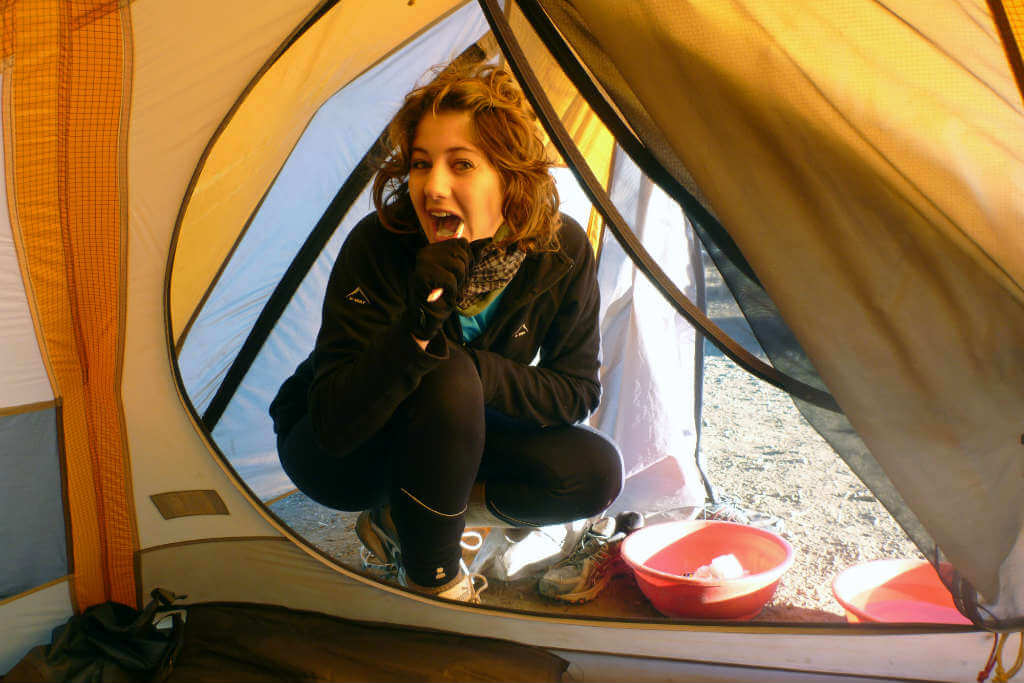
5. Kilimanjaro toilets: So it’s camping, no bathrooms, no showers
Marangu Route is the only Kilimanjaro route that offers hut accommodation and washing facilities.
But it’s also the least scenic route with a less-than-ideal acclimatization schedule, so I don’t recommend it.
For all other routes, you’ll be camping, and there are no showers or flushing toilets.
Although it may sound disgusting, it’s really not that bad.
Your biggest concern is getting to the top of Mount Kilimanjaro, not showering.
And with everyone else being smelly and dirty, you’ll fit right in!
Depending on your tour operator, you should get a bowl of hot water every morning to wash your face and feet. Other than that, wet wipes will be the next best thing.
When it comes to toilets, there are a few long drops on the route.
However, these can be smelly and dirty.
Because of this, most people choose to sneak behind a rock or tree to do their business. It’s definitely the most scenic toilet I’ve ever been to!
You can also organize a private portable toilet tent which your porters will set up when you reach your camping spot for the night.
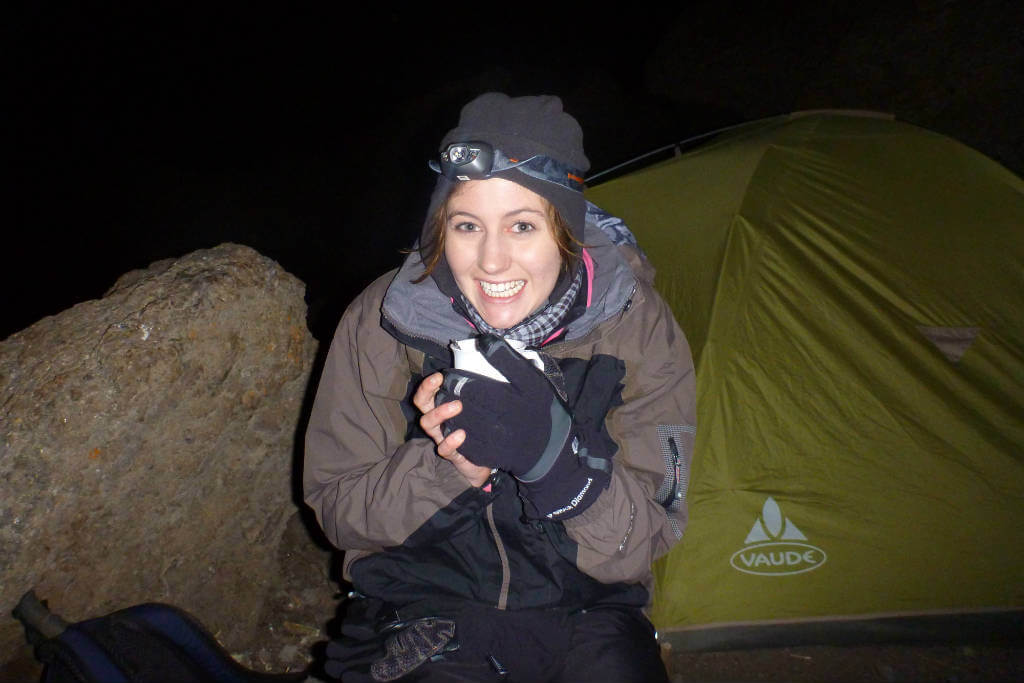
6. When to climb Kilimanjaro
There are two distinct trekking seasons to climb Mount Kilimanjaro: Mid-December to mid-March and mid-June to October.
- Mid-December to mid-March is relatively warm, and the visibility is good. This is said to be the best time to climb Kilimanjaro.
- Mid-June to October is the busiest time to climb Mount Kilimanjaro as it coincides with the European and North American summer holidays. These months can be slightly colder when compared to the January-February months, but they still provide optimal climbing conditions.
- March, April, May, and November are the wettest months and are not recommended for climbing Kilimanjaro. If this is the only time you’re able to go, then I recommend doing the Everest Base Camp trek instead, as conditions are optimal during this time.
Climbing Mount Kilimanjaro in August
Having said this, the above is not a guarantee of great weather. I chose to climb Mount Kilimanjaro in August.
When I arrived in Tanzania, I met a group of hikers who had just returned from their summit attempt.
They had been faced with heavy winds and rain on the mountain, which resulted in many people turning back before reaching the summit.
However, luck was on my side. I climbed the exact same route 7 days later (in August) and had perfect, albeit cold, weather every single day.
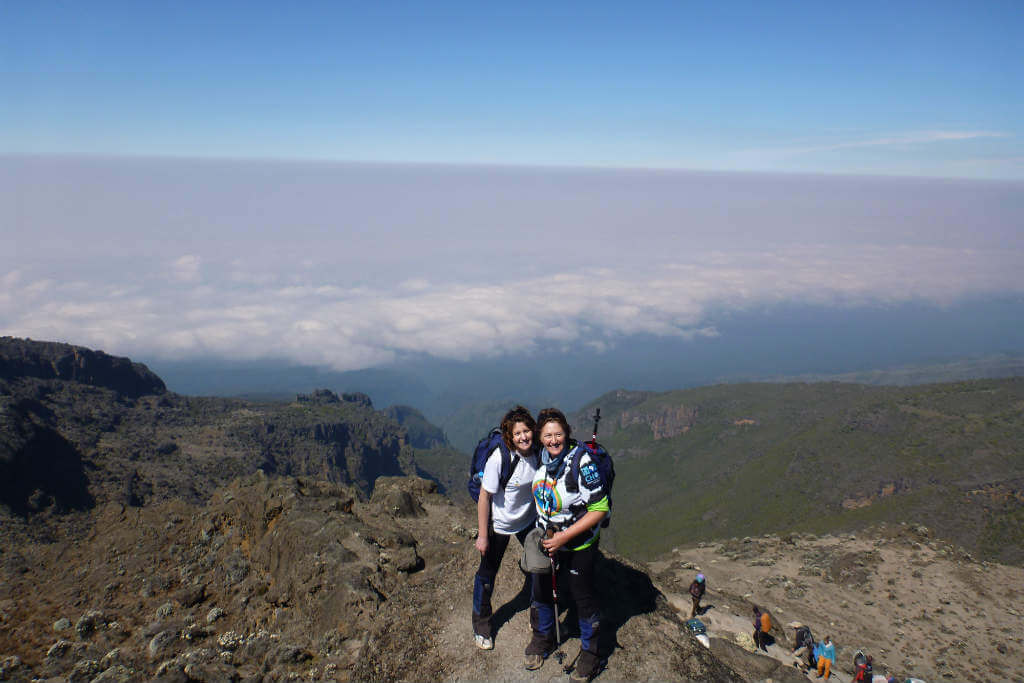
7. Kilimanjaro is not a technical climb
You don’t need any special training or skills to climb Kilimanjaro.
It’s a long hike, but it does not require rope work or ice climbing. This makes it one of the easier Seven Summits to conquer.
8. How hard is Kilimanjaro
Mount Kilimanjaro is not a technical climb, and the trails aren’t demanding.
Every day, besides the actual summit, is like an ordinary hike with a gradual incline leading closer to the peak.
However, walking 4 to 7 hours a day for 7 days straight can be challenging for your body. The last thing you want is sore legs before you even start the day’s walk.
The stronger and fitter you are, the more you’ll enjoy the climb.
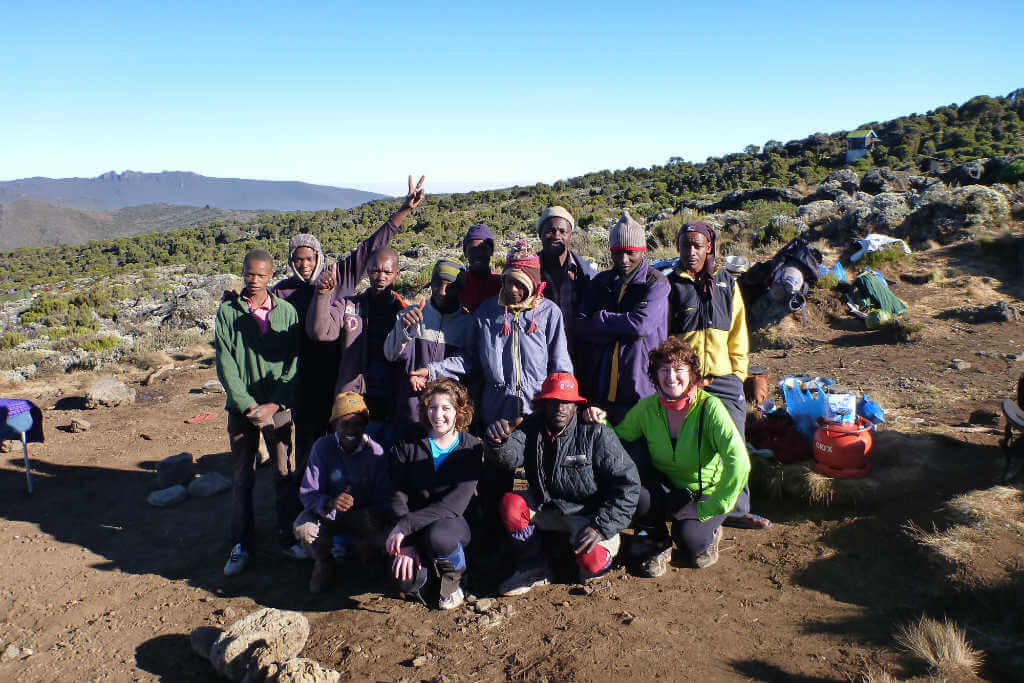
9. ALtitude on Mt Kilimanjaro
Yes, altitude is a bitch!
As you walk higher, breathing becomes more difficult due to the lack of oxygen as a result of the higher altitude.
If your body fails to adapt quickly enough to these lower oxygen levels, you can suffer from AMS (Acute Mountain Sickness).
Symptoms include headaches, nausea, and dizziness which could be fatal if not treated.
AMS is not dependent on age or fitness levels, and each person handles the effects of altitude differently.
If you do not listen to your body, altitude sickness could be fatal.
In most cases, your body will adapt to the altitude relatively quickly, and your symptoms should gradually disappear.
I am a prime example of this!
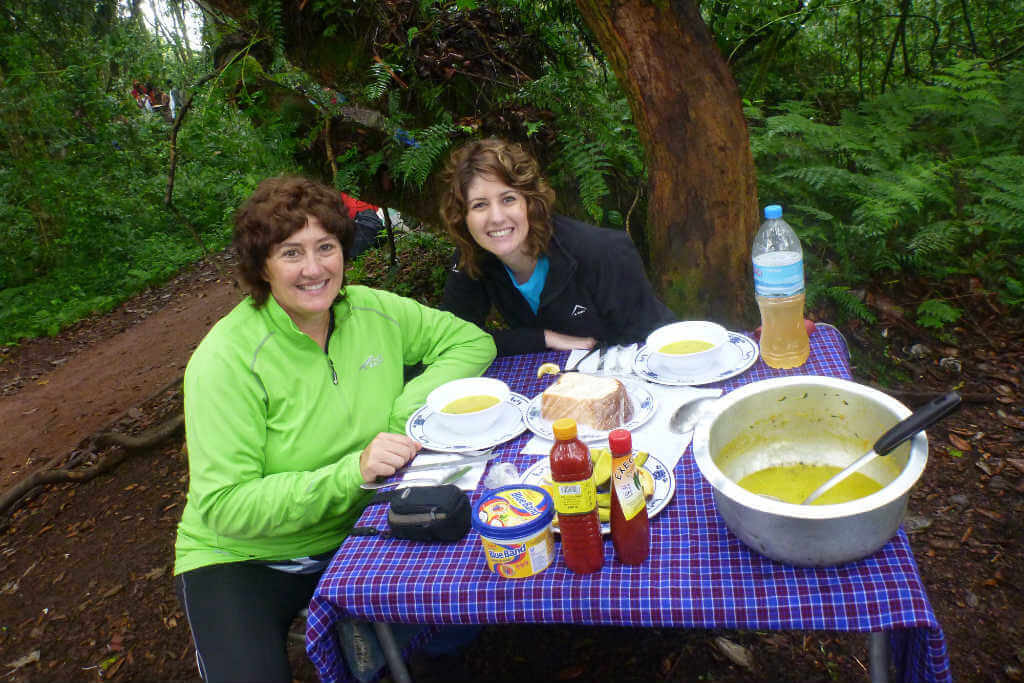
10. What can I do to acclimatize to the high altitude on Mount Kilimanjaro
Below are a few things that will help you acclimatize:
- Try to spend a few days in Moshi before you begin your climb in order to assist with acclimatization. If you go straight from sea level to high altitude, you may struggle.
- Drink lots of water (at least 3 liters per day).
- “Pole Pole” – walk slowly. When you’re with a large group of hikers, you may feel pressured to keep up with the pack. However, this could be detrimental to your summit attempt. You need to walk slowly to preserve energy. Many young, fit people rush to stay ahead of the crowds. As a result, they don’t make it to the top as they push themselves too hard and suffer from AMS.
- Make sure you eat enough food on the first few days of your climb. Your appetite will decline the higher up you go. For my first few meals, I was going back for seconds, but on the third day, I could barely eat.
- Get enough sleep.
- Acclimatization walks. Even though you’ll be tired after spending 6 hours climbing during the day, ask your guide to take you on a short walk to a higher point every evening. This helps your body adjust to the lack of oxygen.
- Consider taking altitude medication (Diamox). I have read many stories about the negative effects of Diamox, and so I chose not to take it. As it is a mild diuretic, you can expect to pee a lot. As a result, you’d need to drink a lot more water than you normally would (5 liters per day!) Other side effects include a tingling sensation in your fingers and toes, and on rare occasions, you may experience blurry vision and dizziness.
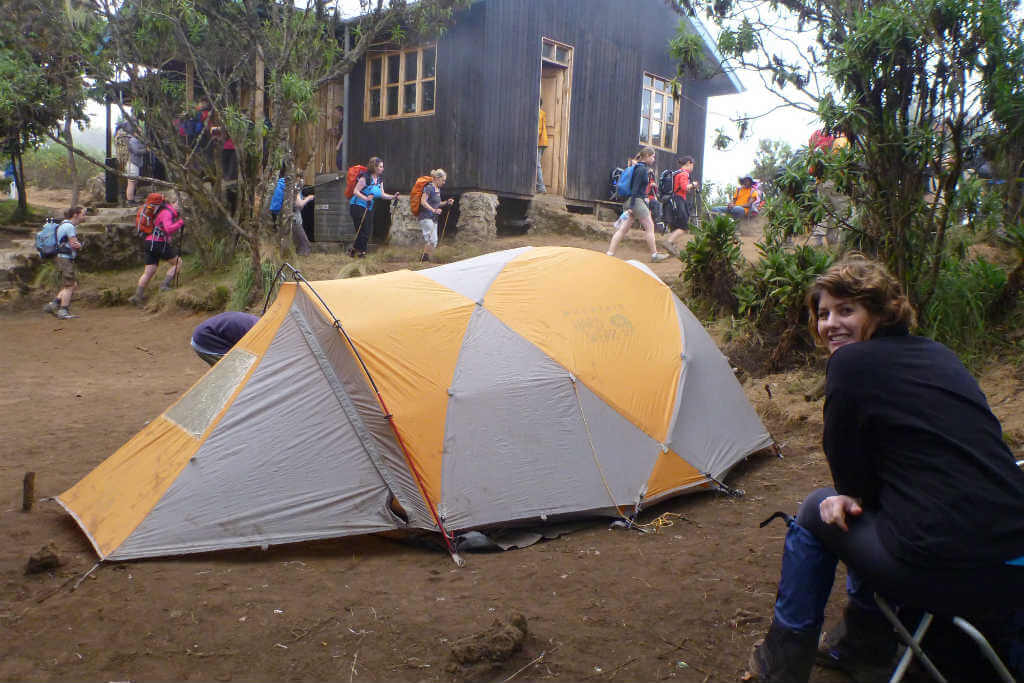
11. The summit Climb is extremely tough
I really struggled with my summit climb on my Mt Kilimanjaro hike.
The days leading up to the summit do not prepare you for what’s to come.
Summit night is when you are really put to the test, mind over matter. How bad do you want this?
Starting between 11 pm and midnight, you climb for 7 hours before reaching the top of Mount Kilimanjaro, Uhuru Peak.
At this stage, I’d managed to adapt to the higher altitude. Instead, the cold weather and wind chill was my next obstacle.
Whilst attempting my Kilimanjaro summit, I had many thoughts of turning around.
I wanted my warm bed, a fire going in the corner, and wine!
But instead, I thought I was going to lose my fingers due to frostbite. The only thing that kept me going was knowing my mom was ahead of me, and she was doing just fine!
But despite the winging and moaning, I made it to the top.
Every step on that summit climb was a struggle, and it seemed to take a lifetime.
That feeling you get when you reach the top of Mount Kilimanjaro is indescribable!
But then you realize you still have another 7 hours of walking to do before you can call it a day, ah!
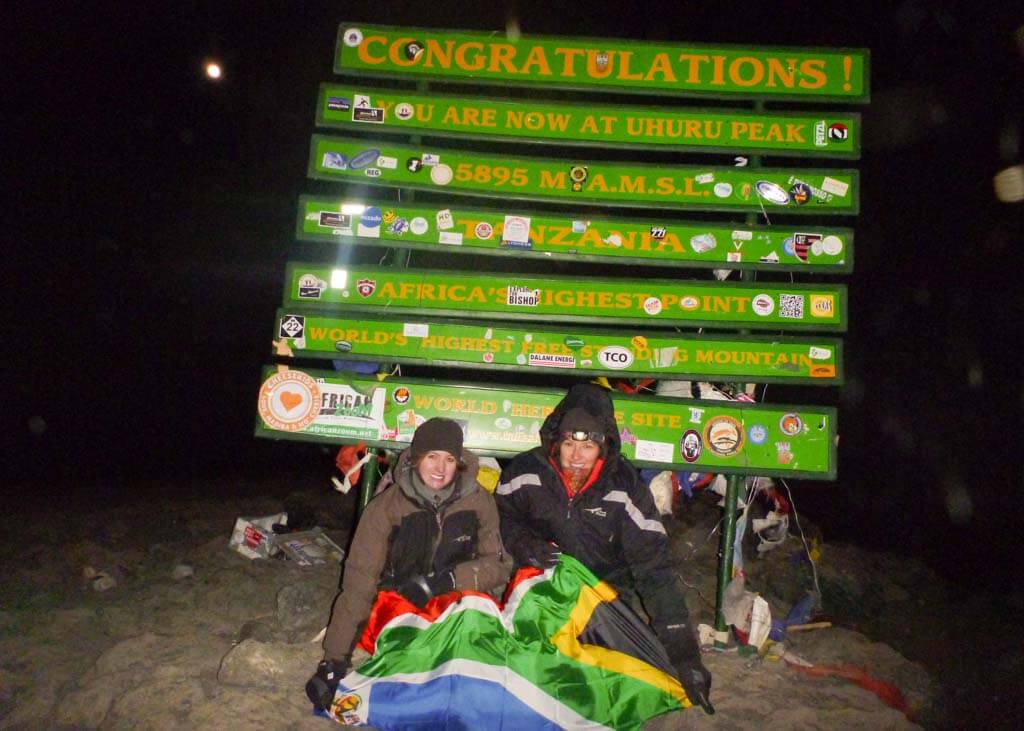
12. Training for Kilimanjaro
Climbing Kilimanjaro isn’t a sprint!
It’s a slow walk and demands endurance and willpower rather than a high fitness level.
When training for Kilimanjaro, keep this in mind and make sure you balance your training between fitness, strength, and endurance training.
In order to prepare yourself, it’s best to climb stairs and a lot of them!
Climbing sand dunes is also a great workout if you live near the beach.
Whilst doing this training for Kilimanjaro, you should wear a backpack with 5 kg to get used to carrying a backpack for longer periods of time.
Although the porters carry most of your things, when you climb Mount Kilimanjaro, you will still carry a daypack with your water, snacks, camera, and other personal items.
I was also able to easily run 5 to 10 km before I left for Kili. However, many people can still climb Mount Kilimanjaro with only a few long training walks and stair climbs.
Despite doing all of this training for Kilimanjaro, I still suffered from symptoms of altitude sickness!
And while training is critical for a successful climb, you also need to ensure you’re prepared in terms of what you pack for Kilimanjaro.
You can do all the training in the world, but if you’re not comfortable, you won’t make it.
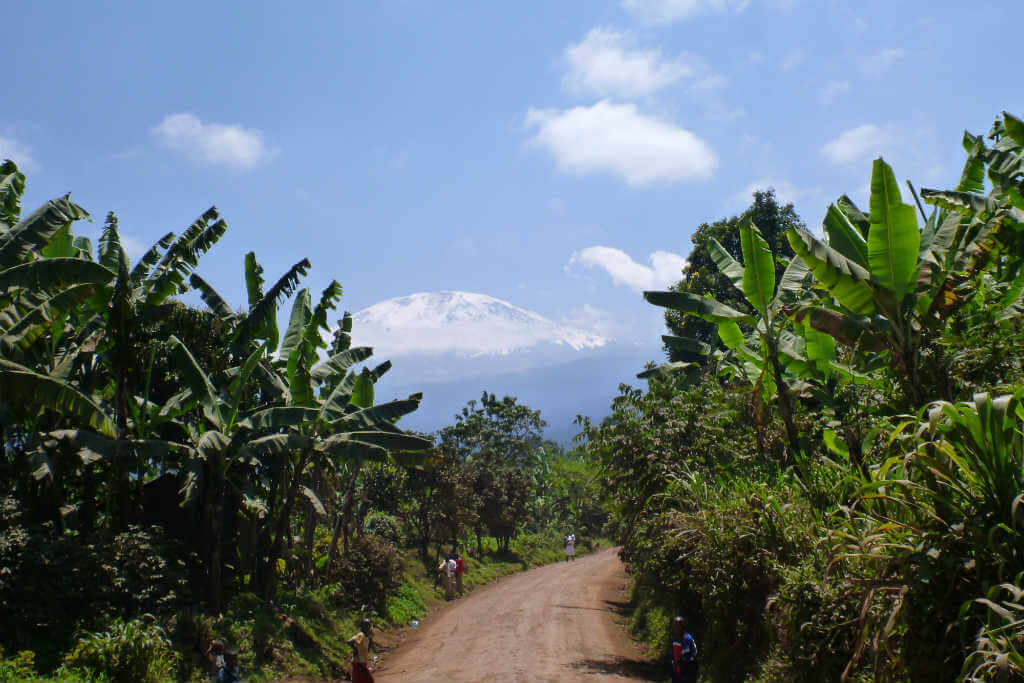
13. How much does it cost to climb Kilimanjaro
The cost of a Kilimanjaro tour is anywhere between $1,500 and $5,000 per person.
The amounts on either end of this scale are questionable, and you should look at paying between $2,000 to $3,000 for a well-organized and safe trek.
This includes transfers to and from the airport, a night in a hotel before and after your climb, and all expenses on the mountain.
You will be provided with 3 substantial meals per day, water and camping equipment. You’ll also have a team of registered guides and porters who will take care of you for the duration of your trek.
The Kilimanjaro National Park fees are also included in this tour cost. These fees are the main contributing cost as to why Kilimanjaro is so expensive.
Note: The cost of climbing Mt Kilimanjaro depends heavily on the number of days you opt for, the size of your tour, and the route you choose.
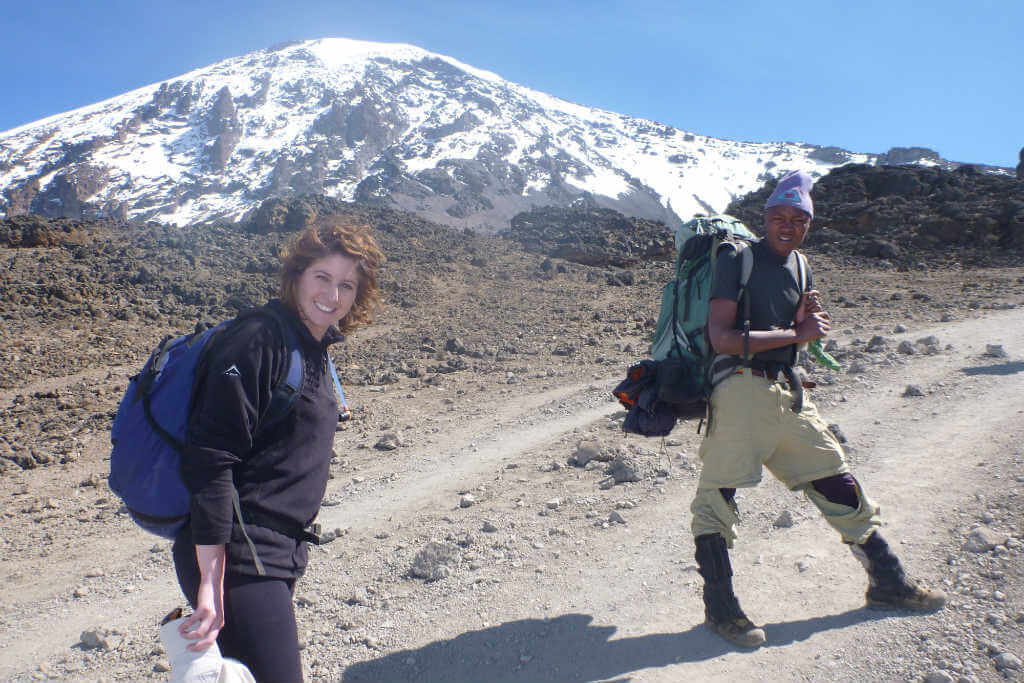
14. Kilimanjaro climb costs: Staff tips
Although this is not an obligation, you are expected to pay the crew at least 10% of your tour fee.
You’ll hand this over to your guides and porters after you’ve completed your climb, regardless of whether you had a successful summit or not.
15. How to get to Mt Kilimanjaro
To get to Mt Kilimanjaro, you need to fly into Kilimanjaro International Airport. This airport has direct international flights from all over the world.
Alternatively, you can fly into Dar Es Salaam, which is Tanzania’s capital, or Nairobi (Kenya). From there, take a cheaper connecting flight to Kilimanjaro Aiport.
Kilimanjaro Airport is a 45-minute drive from the town of Moshi, which is the gateway to the Kilimanjaro climb
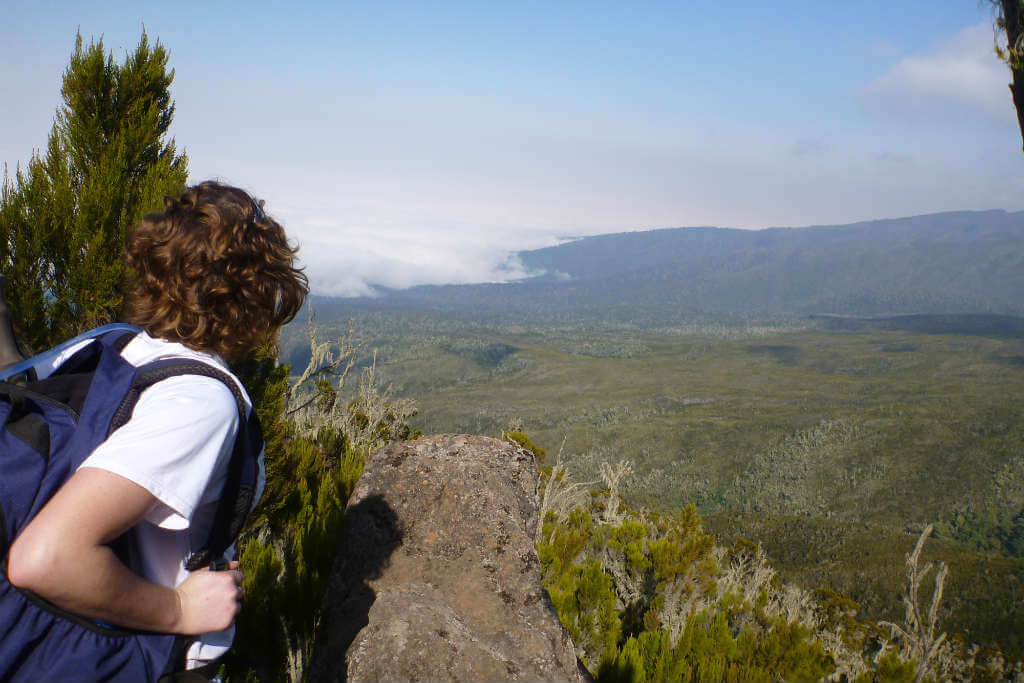
16. visa for Tanzania
A single-entry visa is required to enter Tanzania.
This can be arranged on arrival at the Dar es Salaam Airport (Julius Nyerere International Airport) or Kilimanjaro International Airport.
This visa costs $100 for US and Irish Citizens and $50 for non-US citizens.
All you need is your passport, money… and a bit of patience.
There are generally queues, and although the process is simple, it can take time.
17. Vaccinations for Kilimanjaro
Yello fever
If you’re coming from a yellow fever zone, it is a requirement to have a yellow fever vaccination.
You can get this shot at either the Dar es Salaam or Kilimanjaro airports for $50. So don’t stress too much if you forget to get it.
Malaria
Tanzania is a high-risk malaria country. However, mosquitoes are not found at higher altitudes with cold temperatures.
It’s important to have mosquito repellent for your days in Dar es Salaam or Moshi, as this is where the risk of infection is greater.
You could take malaria tablets, but these can affect you on your climb. It’s best to consult your doctor to get their professional advice.
18. Other things to consider
- It’s also a nice gesture to give some of your hiking gear to the porters who need it after you have completed your hike. A T-shirt or old trainers is something they’ll accept with open arms.
- You cannot do the Kilimanjaro climb without a guide. All trekkers must be accompanied by a registered and licensed guide.
- When planning your Kilimanjaro trek, why not pair it with one of these 16 unique experiences in Africa.
My experience on climbing Kilimanjaro
On the third day of my Mount Kilimanjaro trek, whilst approaching Lava Tower (4 600 m), I started feeling nauseous and fatigued.
I had a headache, lost my appetite, and couldn’t eat.
I’d done exactly what the book said.
I was walking at a snail’s pace, I was getting enough sleep at night, eating more than my fair share of food, and drinking plenty of water.
I’m young and fit and did the proper training for Kilimanjaro.
So why did I get sick?
Simple answer: some people adapt better to higher altitudes, like my mother, who never suffered any symptoms.
But remember, just because you have the symptoms of altitude sickness on Mount Kilimanjaro doesn’t mean you have to turn back.
Luckily for me, this point, Lava Tower, was the maximum climbing height for that day.
Once you reach it, you walk down to Barranco Hut (3 950 m), which is a camping spot for the night.
Because I slept at a lower height than I had climbed that day, my body was able to acclimatize. By the next afternoon, I was feeling strong and healthy again.
Tell your guides if you’re not feeling well. This will allow them to manage your Kilimanjaro climb and take precautionary measures.
If it gets to a point where they don’t think it’s safe anymore, you will need to turn back.
But if you choose to hide the symptoms and keep pushing on even though your body is clearly not adapting, it could be fatal.
Final thoughts on my Mt Kilimanjaro trek
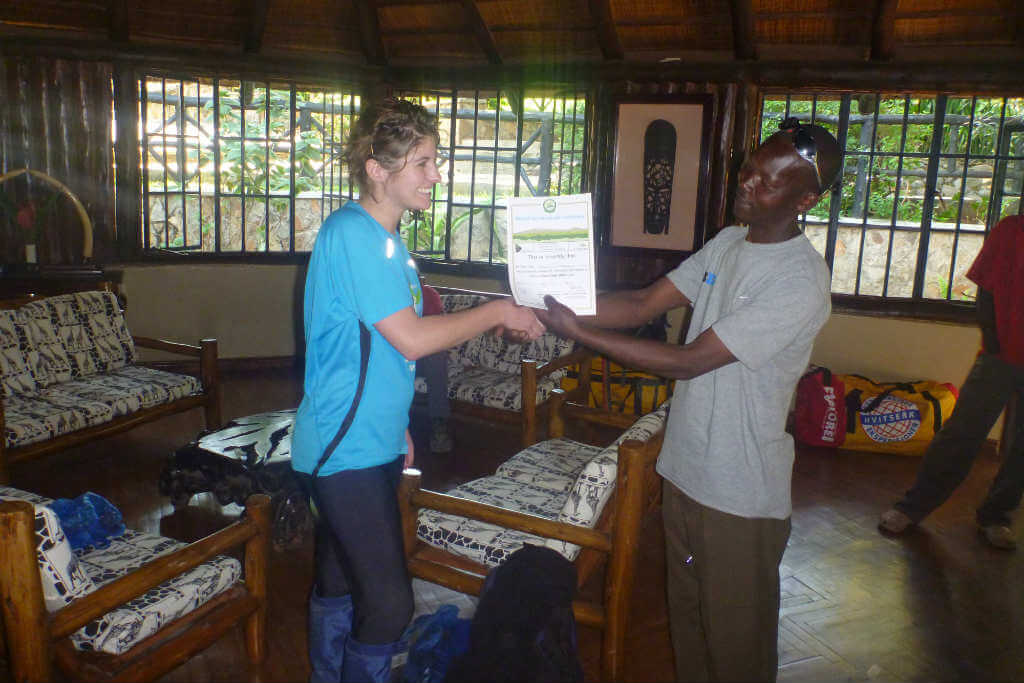
Choosing to climb Mount Kilimanjaro was a physically and emotionally challenging venture for me.
But no matter your age or fitness level, it is doable.
No, I will not be climbing it again (I have a “try everything once” motto). But knowing that I could handle Kili has motivated me to keep pushing myself and testing my limits.
Every experience, whether a success or failure, is a learning curve, and after my successful attempt of Mount Kilimanjaro, I’m excited to take on the mountains of Nepal.
Looking for more Africa travel information? Want more adventures? Check out my other posts!
- The Ultimate Kilimanjaro Packing List
- 14 Top Victoria Falls Activities
- How to Cross The Border From Zambia To Zimbabwe
- Guide to Visiting Victoria Falls National Park
Pin this!
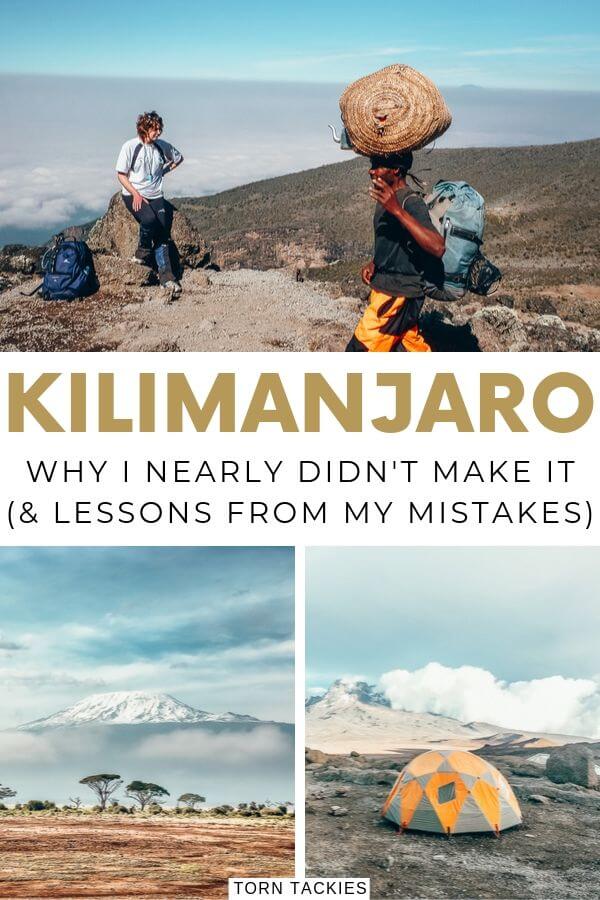

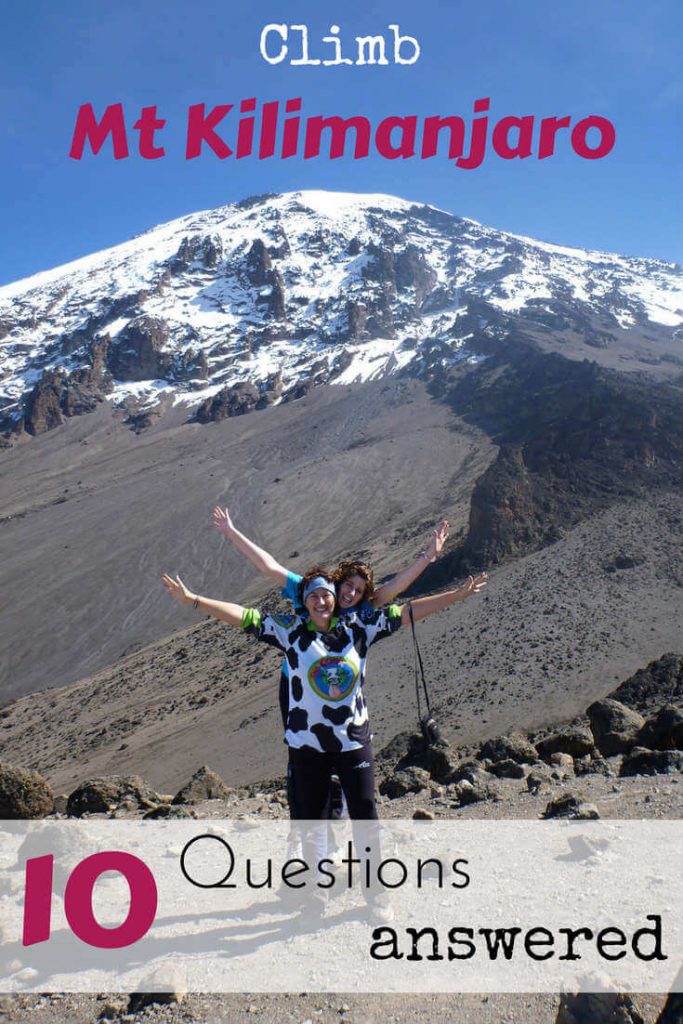
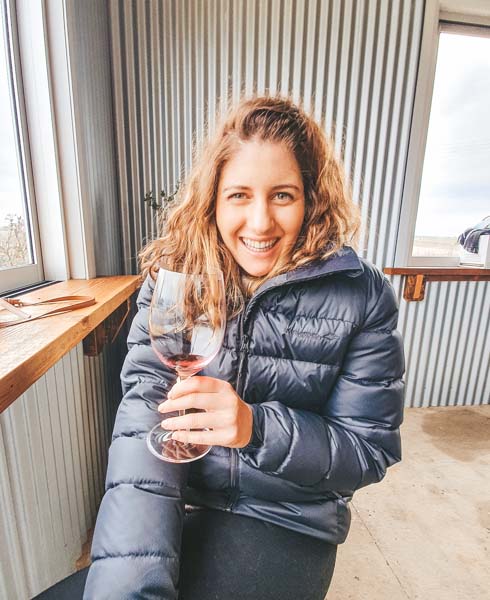
This looks awesome!
So amazing you got to complete this climb with your mum! Kilimanjaro has recently become one of my top bucket list climbs and I am looking forward to challenge myself this way! Thank you for sharing so much valuable info and great job on completing this amazing climb! 💜
Tips to climb Kilimanjaro are useful, you can get affordable Kilimanjaro climbing trips without breaking your bank account!
Sounds like this was quite the challenge. I’m not sure if I would make it!
No matter what hike I go on, my motto is always slow and steady like you said lol.
Definitely a bucket list trek!